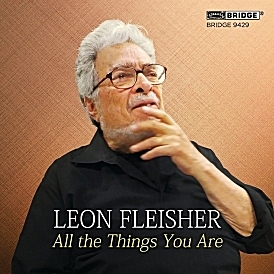
Music of Peter Lieberson Volume 3
Piano Concerto No. 3
Viola Concerto
Stephen Beck, piano; Roberto Diaz, viola;
Odense Symphony Orchestra, Scott Yoo, conductor
Peter Lieberson (1946-2011) was a composer capable of creating affecting works in a wide range of styles. He was well known for collaborations with his wife, mezzo-soprano Lorraine Hunt Lieberson; songs resplendent in lyricism. On the other hand, many of his earlier compositions were written in a more modernist vein. Later concertos for piano and viola point out that the composer covered a great deal of musical terrain between the two aforementioned approaches .
“Leviathan,” the first movement of Piano Concerto No. 3 (2003), pits incisive piano lines against muscular gestures from the orchestra. Alternating between richly hued and fragile passages, in “Leviathan” Lieberson convincingly threads his way through an intricate structure. “Canticle,” the piece’s second movement, revels in an extended triadic language. At its outset, roles are exchanged; here the piano is often the more assertive party with the orchestra supplying a lush and sustained background. Eventually there is a changing of the tide, with gentle gestures from the piano being offset by arcing lines and punctuating percussion from the orchestra. The concerto’s final movement is a Rondo. The main motive here, a polytonal chordal cascade, is presented in various permutations and is contrasted by far flung episodes. Of considerable interest are the sudden contrasts one finds here. Varying motives and meters, and transformations of harmony and orchestration provide a bevy of (pleasant) surprises. Soloist Steven Beck plays with thoughtful grace and, where required, strongly articulated virtuosity. Scott Yoo leads the Odense Symphony in an assured performance that takes the concerto’s many contrasting sections and technical demands in stride.
The first movement of Lieberson’s Viola Concerto (1992, revised in 2003) is a catalog of the many ways that you can treat the interval of a minor third. It serves as a motto in the solo part, but also infiltrates the orchestra quite thoroughly: from the flutes right down to the double basses. The second movement, a Scherzo, keeps the minor third around, but often treats it as an ostinato from which ornate altered scales emerge. The piece’s final movement features an expansive and ardent Adagio section, with some lovely cadenza passages and a tapering denouement, capped off (relatively late in the game) by a boisterous Allegro. This features a reintroduction of (you guessed it) that minor third in a variety of new guises. The Viola Concerto is an excellent example of a composer restricting himself to a particular palette, yet allowing a plethora of permutations from it to emerge. And while there are passages in which harmonic centers are ambiguous, the overall musical language of this piece is more conservative than Piano Concerto No. 3. Not that this is a bad thing; it demonstrates the composer’s versatility. One only wishes that Lieberson could still be here to enjoy the stirring rendition of this piece provided by soloist Roberto Diaz and, once again, the stalwart Odense Symphony Orchestra under the direction of Yoo. This is one of my favorite recordings of 2014.

